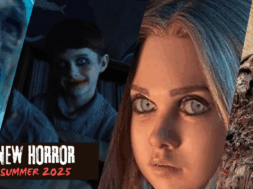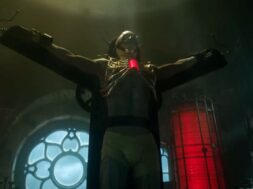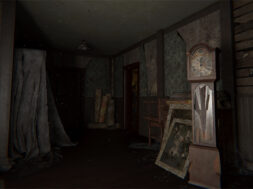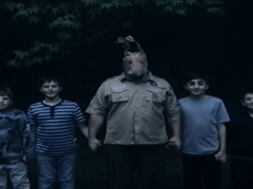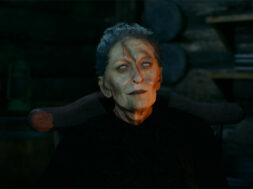Looking back through Wes Craven’s filmography, the realization of just how ambitious he was as a director and artist hits hard. While his voice was always distinct, he consistently sought to try something new and different. From the grimy exploitation of The Last House on the Left to the self-referential teen horror classic Scream, Craven’s clear pulse on the ever-changing horror genre continues to make his loss immeasurable. Perhaps one of his most ambitious projects ever was The Serpent and the Rainbow, released 30 years ago in theaters on February 5, 1988.
The opening card describes the Serpent as voodoo symbolism for the Earth and the Rainbow as Heaven, which means everything living exists between the two. It’s an ironic parallel for the film as a whole; Wes Craven’s film exists in a strange in-between of horror and adventure. Released between directorial efforts Deadly Friend and Shocker, The Serpent and the Rainbow was far more serious in tone. Craven also didn’t intend for it to be a horror film at all. Based on the non-fiction book of the same name by Wade Davis, and adapted for screen by Richard Maxwell and Adam Rodman, Universal Pictures pressed for more horror based on Craven’s usual work. The result is a sort of a grim Indiana Jones-like adventure narrative set against the tense backdrop of deep political unrest with a lot of brilliant gruesome horror moments and imagery. The plot is simple; an archaeologist heads to Haiti to get to the bottom of rumors that there’s a drug used by Voodoo practitioners that turns people into zombies.

While the political unrest of Haiti played prominently in the story, it existed simultaneously during filming as well. While the cast and crew initially began filming there, the government let them know they couldn’t guarantee their safety during the shoot, and so they had to relocate to the Dominican Republic. Because they filmed on location, there’s a lot of authenticity in the film, especially where the extras are concerned. Much of the scenes featuring Voodoo practitioners are real; the behind the scenes featurette on Scream Factory’s fantastic special edition release reveals that the scene that features a woman eating broken glass was a legit practitioner in a trance.
The insane setting during filming and the realism of the Voodoo practitioners used on screen was further enhanced by the father and son FX duo Lance and Dave Anderson. The creepy ghost bride with the snake in her mouth, the decimation of protagonist Dennis Alan’s few allies, and the surrealistic nature of Alan’s nightmares were bolstered by fantastic practical effects crafted by the Andersons, with Craven taking a hands-on approach in their work for the film.
The Serpent and the Rainbow is the type of film made better by happenstance; Davis originally sold the rights to his book on the condition that Peter Weir helm the project and that it star Mel Gibson as hero Dennis Alan. When neither happened, the film shifted into something else entirely when Craven signed on. Dennis Alan likely became a much more endearing, likable character in the capable hands of then-newcomer Bill Pullman. Pullman turned out the type of committed performance that made Alan an intelligent fish-out-of-water that played well to the narrative, whereas it’s easy to imagine that Gibson would’ve turned the character into another ‘80s action hero.

Between the stunning locations, the commitment for realism in hiring actual Voodoo practitioners, the gorgeous work by cinematographer John Lindley, Craven’s desire to turn out a much more sophisticated film, the great effects work, and a stellar cast, The Serpent and the Rainbow is an underrated masterpiece that endures the test of time. As with most things that Craven worked on, studio interference that he add flourishes more on brand with his name, i.e. horror, meant a very different film than what he originally set out to do. Yet, he took those studio mandates and applied them in a way here that meant a much more refined film than what Universal likely expected from the director of Deadly Friend.
It’s bittersweet now to watch The Serpent and the Rainbow, whose entire premise hinges on a zombification drug and cheating death, and think of Craven. A true master of horror with a long roster of films that worked, regardless of style of tone, because of his absolute sincerity given to each and every one of them. Very few directors have many films in their roster that stands up to time well, and Craven is one of them. The Serpent and the Rainbow is still just as effective as it was 30 years ago, and here’s to 30 years more.





